When mentioning the name Hachiko, many people are likely familiar with it. This is a famous dog that truly existed in Japan. Hachiko is an Akita breed, born on November 10, 1923, on a farm in Akita Prefecture. Later, he was brought to Tokyo by his owner, Hidesaburo Ueno, a professor of agriculture at the Imperial University of Tokyo. For many years, Hachiko would go to Shibuya Station every afternoon to wait for his owner to return from work.

The movie Hachiko (2009) adapted by Hollywood
On May 21, 1925, Professor Ueno suddenly passed away from a stroke while teaching. That was the first day at 3 PM when Hachiko did not see the familiar figure of his owner at the train station gate. However, from that day on, the loyal dog continued to run to the entrance of Shibuya Station every afternoon, waiting for a miracle in vain. This journey lasted for a continuous 9 years and 9 months until Hachiko himself passed away on March 8, 1935.
The touching story of Hachiko spread throughout Japan and later was adapted into a famous film. Today, there is still a statue of Hachiko at Shibuya Station in the heart of Tokyo to commemorate this loyal dog. However, there are many interesting facts about Hachiko that not everyone knows.
1. Hachiko is not his real name
Hachiko was a purebred Akita dog born in Odate City, Akita Prefecture. He was sold for 30 yen to Hidesaburo Ueno, which was a considerable amount at that time. There is also a statue of Hachiko in Odate City, located in front of the largest central train station.
As Hachiko was transported on a limited express train to Tokyo at 8 PM, Professor Ueno decided to name his pet Hachi, which means the number 8 in Japanese. Later, after Hachiko passed away and became famous, people added the suffix “ko” to Hachi’s name as a mark of respect in Japanese naming conventions. Over time, everyone began to call him Hachiko.
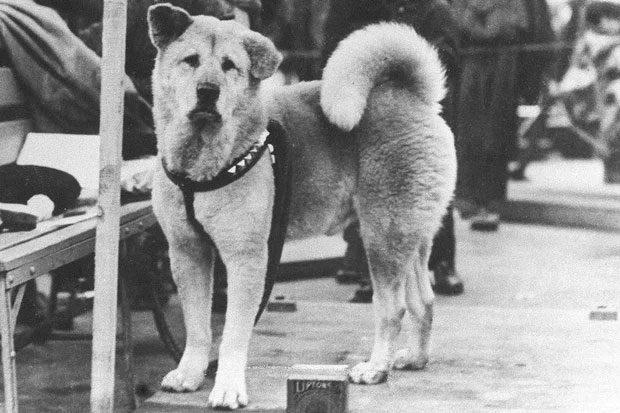
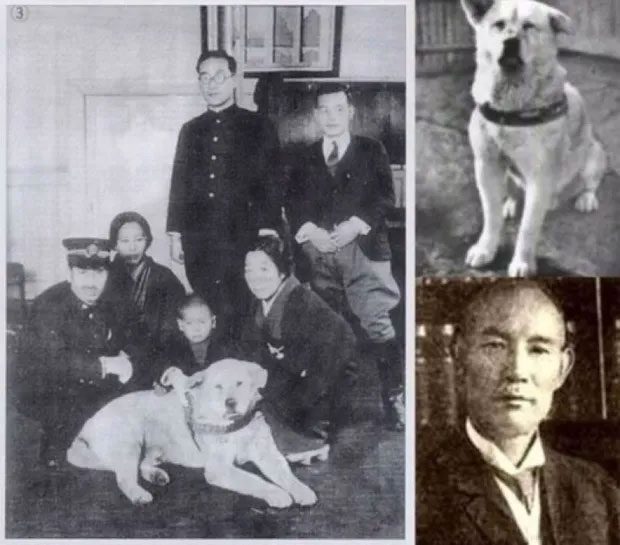
Photo of Hachiko with the Ueno family
2. Hachiko was taken to different families after his owner passed away
After Professor Ueno passed away, his family gave Hachiko to another household. However, no matter where he was taken, Hachiko always found his way back to Shibuya Station every afternoon. Some families lived several miles away from the station, but Hachiko remained persistent in his journey. After several changes in ownership, he finally “settled” with a new owner, Kikuzaburo Kobayashi, who was a gardener for Professor Ueno during his lifetime. Because the Kobayashi family lived quite close to Shibuya Station, Hachiko could conveniently go there every afternoon.

Shibuya Station in the 1920s
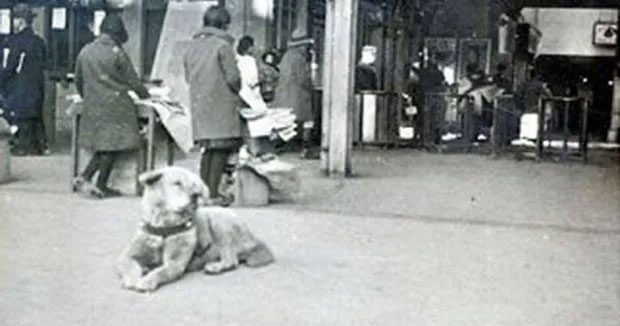
Hachiko patiently waiting for his deceased owner at Shibuya Station, Tokyo
3. Why did Hachiko’s story spread?
In 1932, while Hachiko was still alive, Hirokichi Saito, the president of the Japanese Dog Preservation Association, heard the story of the dog that waited daily for his deceased owner. Hirokichi Saito was a former student of Professor Ueno and an expert in Akita dog breeds.
He wrote this story in the Asahi Shimbun magazine, and it quickly spread throughout Japan, touching people’s hearts. Hachiko became famous from that point on and was regarded as a symbol of loyalty.
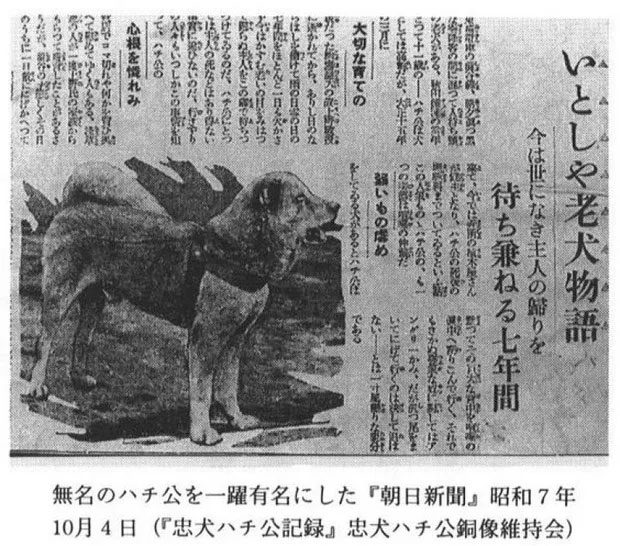
The story of Hachiko published in Asahi Shimbun in 1932
4. Hachiko became a tourist attraction for the local area
After being featured in the newspaper, Hachiko was loved by people all over Japan. Since then, there have always been people coming to Shibuya Station, not to catch a train, but to meet Hachiko. Many even traveled from distant provinces to Tokyo just to see the famous dog in person.
In 1934, a year before his death, Hachiko was sculpted and a statue was erected in the center of Shibuya Station. The sculptor of this famous statue was Teru Ando, who was also a friend of President Hirokichi Saito. The original statue of Hachiko was destroyed during World War II. Later, Teru Ando’s son rebuilt the statue once again.
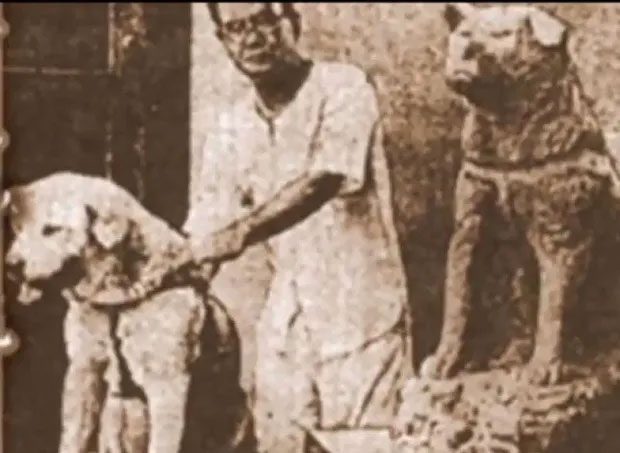
Hachiko had the opportunity to attend the inauguration of his own statue
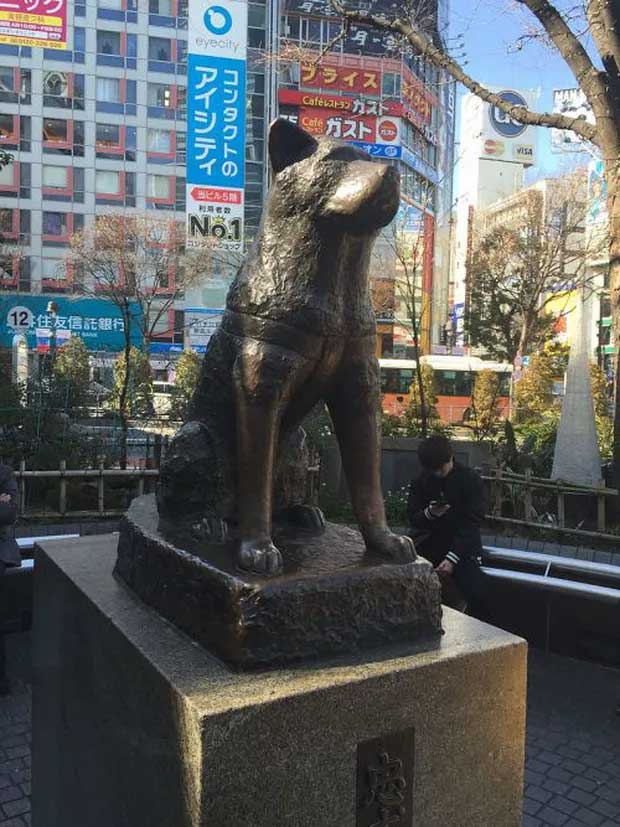
The statue of Hachiko today in the heart of Tokyo
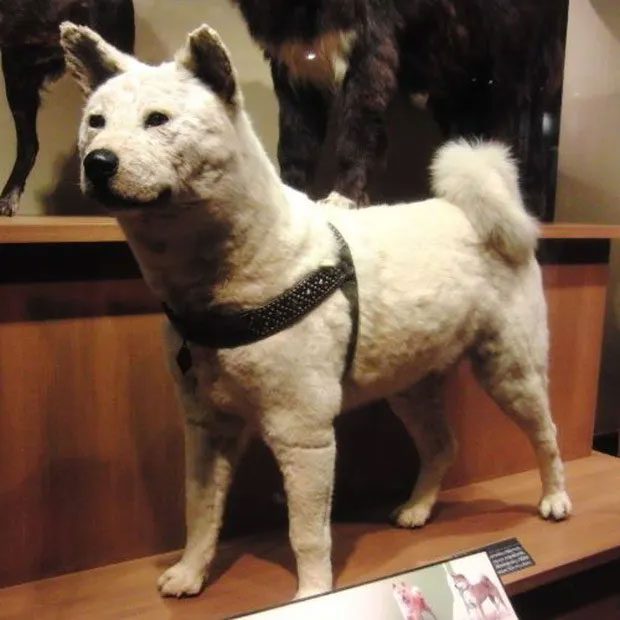
Hachiko’s fur at the museum
Currently, the internal organs of the famous dog are preserved at the Agricultural Science Museum of the University of Tokyo. The original fur of Hachiko is also displayed at the National Museum of Nature and Science.





















































